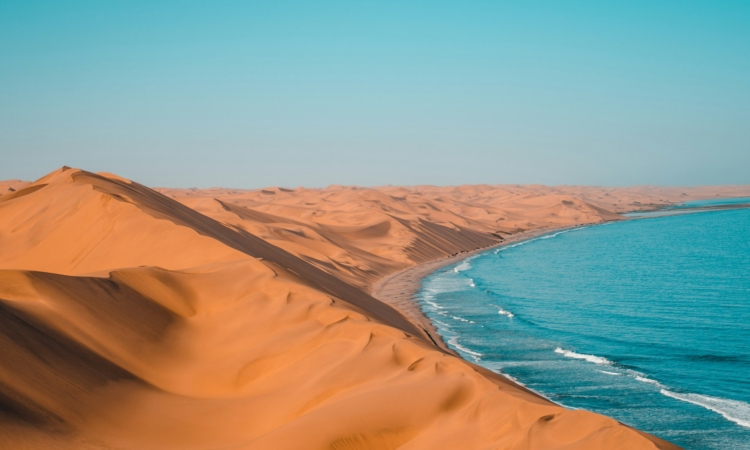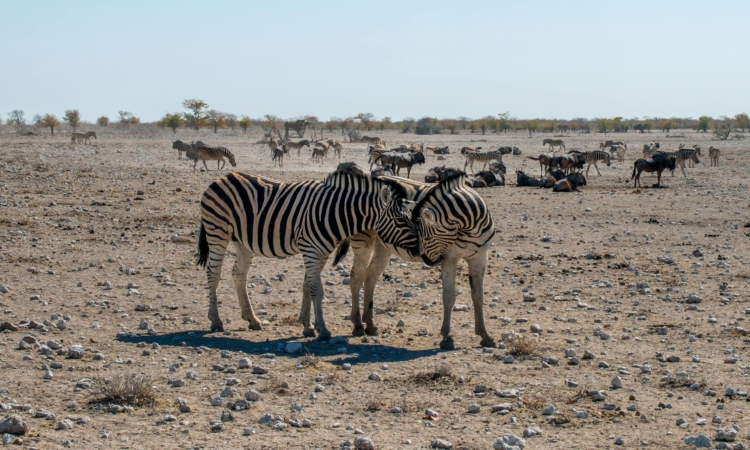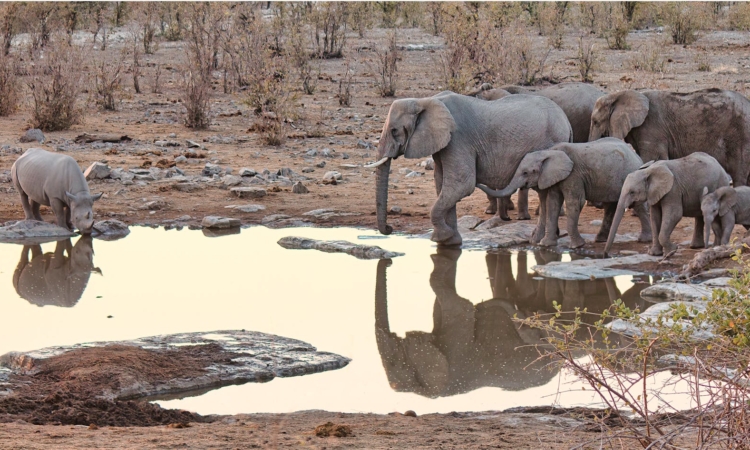In Namibia, southwestern Africa, the Tsauchab River is an unpredictable river found inside the dry Namib-Naukluft National Park.
The river’s most well-known part is where it flows through the red sand dunes of the Sossusvlei area before ending in a landlocked drainage basin. Here, the sand dunes block its path, and the water cannot reach the ocean.
This river is important for the local environment, especially considering the dry desert around it.
Geography
The Tsauchab River begins on the eastern slopes of the Naukluft Mountains and flows about 100 kilometers before ending in a dry lake at Sossusvlei, around 60 kilometers from the Atlantic Ocean. Its journey passes through rocky hills, gravel plains, dry land, and some of the tallest sand dunes in the world.
Sesriem Canyon
Sesriem Canyon, a major feature in the area, is closely connected to the Tsauchab River. The river carved the canyon over millions of years. The canyon is about 4.5 kilometers from the village of Sesriem.
The name “Sesriem” means “six belts” in Afrikaans. It refers to the six leather belts early settlers used to lower buckets into the canyon to collect water. Because of the Tsauchab River, Sesriem Canyon holds water throughout the year.
This makes it an important water source for local animals and may have helped the first people and animals survive in the area.
The canyon is a narrow gorge about 30 meters deep and nearly a kilometer long. Even though the environment is hard, the canyon is home to many kinds of insects, reptiles, and birds.
You can also see different layers of rock inside the canyon, each showing a part of the area’s long geological history. Some overhangs and caves in the canyon walls show where the river once flowed at higher levels.
Flora & Fauna
Life along the river has adjusted to the harsh desert. Many plants grow along the riverbanks and nearby areas. The most well-known is the camel thorn tree (Vachellia erioloba), a symbol of Namibia and southern Africa.
Other desert plants like the Nara melon grow here and provide important food and water for wildlife.
Animals that live here include oryx, springbok, and ostrich. These animals can survive in the dry desert. You can also find many bird species and small desert animals like geckos, snakes, and insects.
The Climate
This area has very little rain, very hot summers (especially in December), and cold winters. Rain usually comes in short, scattered thunderstorms between January and April.
When the river does flow—usually because of rain in the Naukluft Mountains, the dry desert briefly comes alive with activity.




